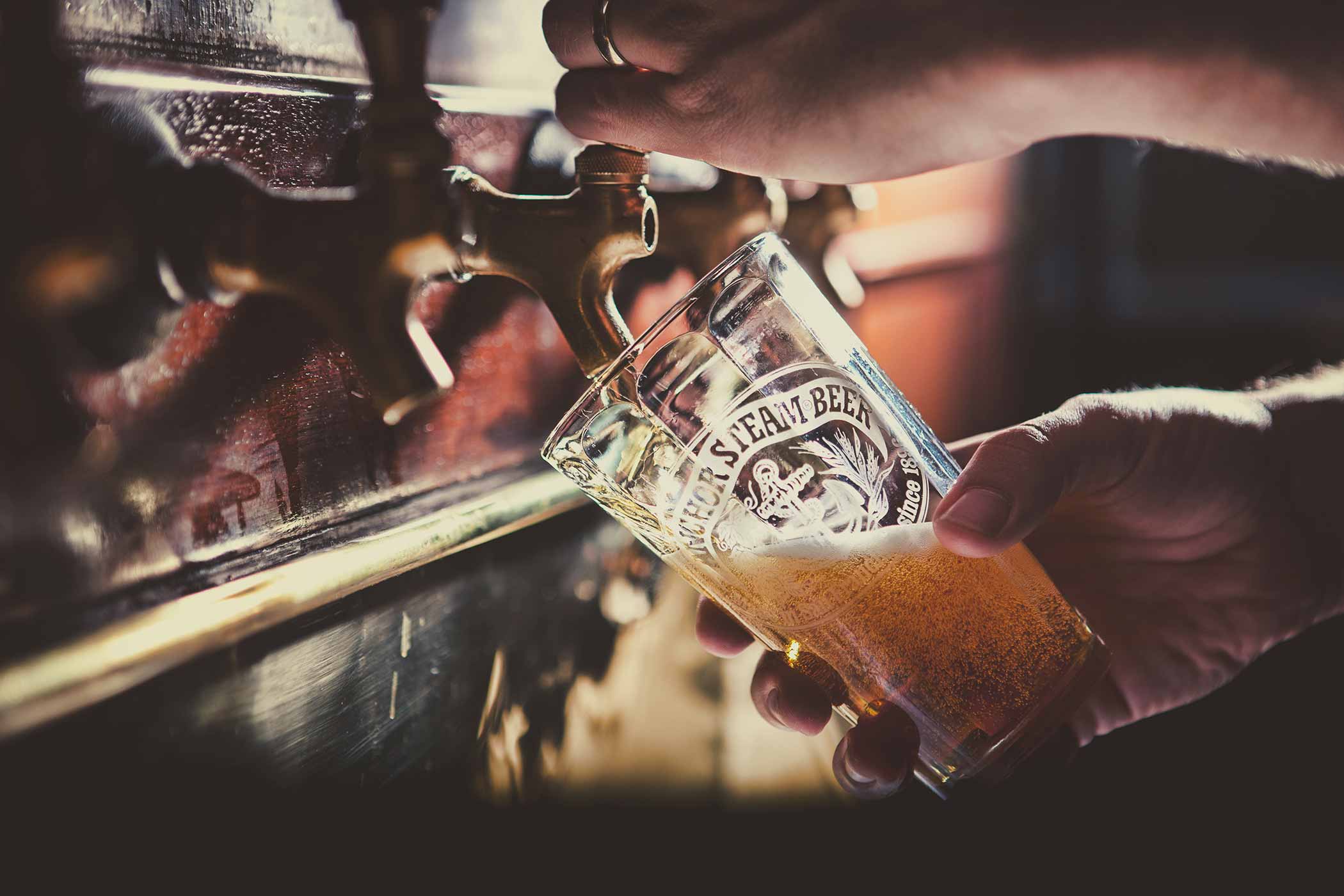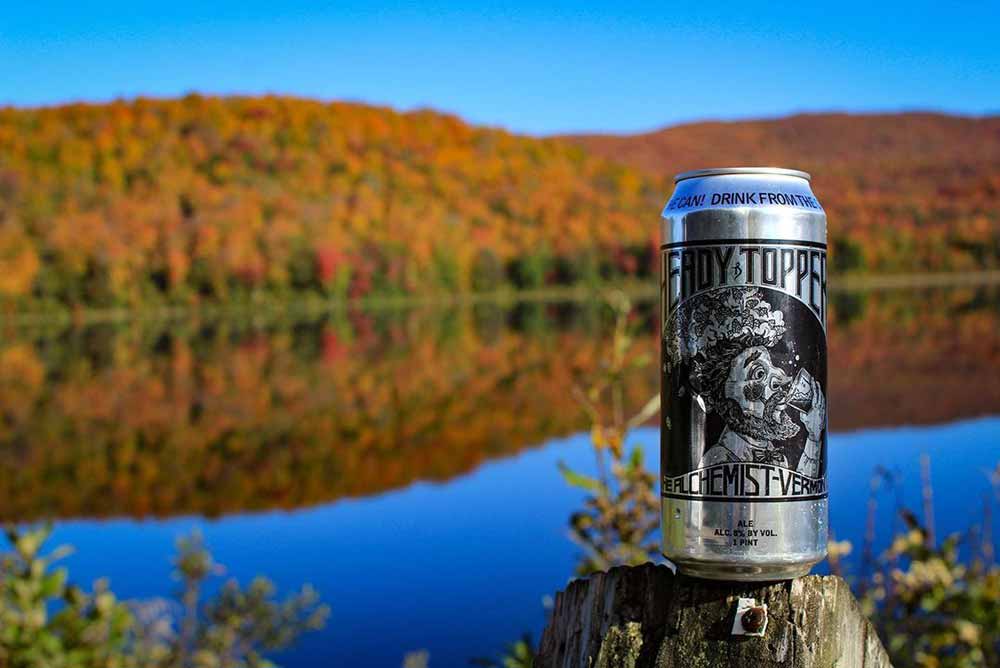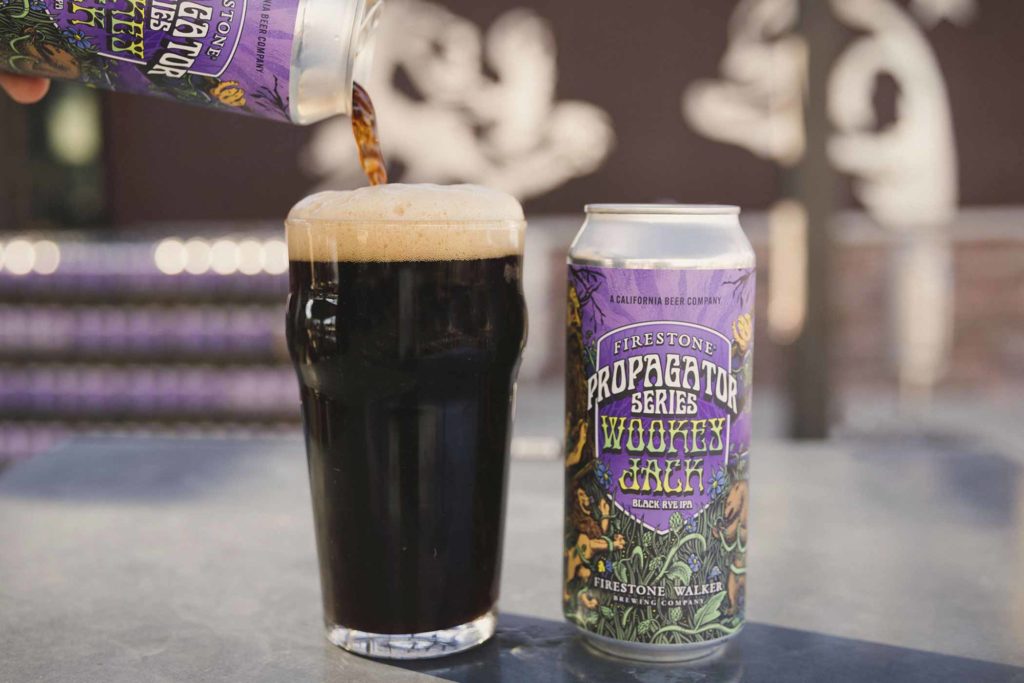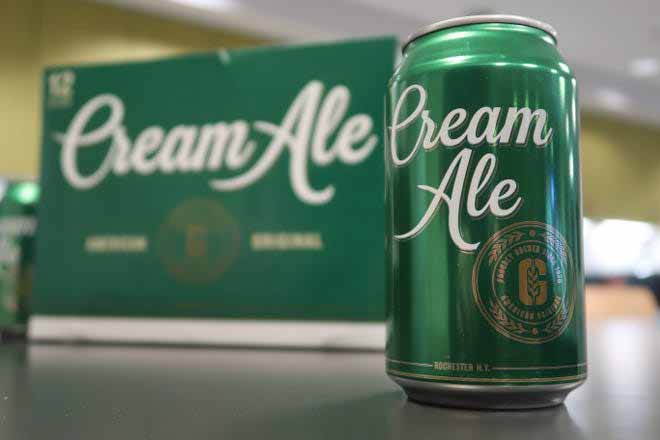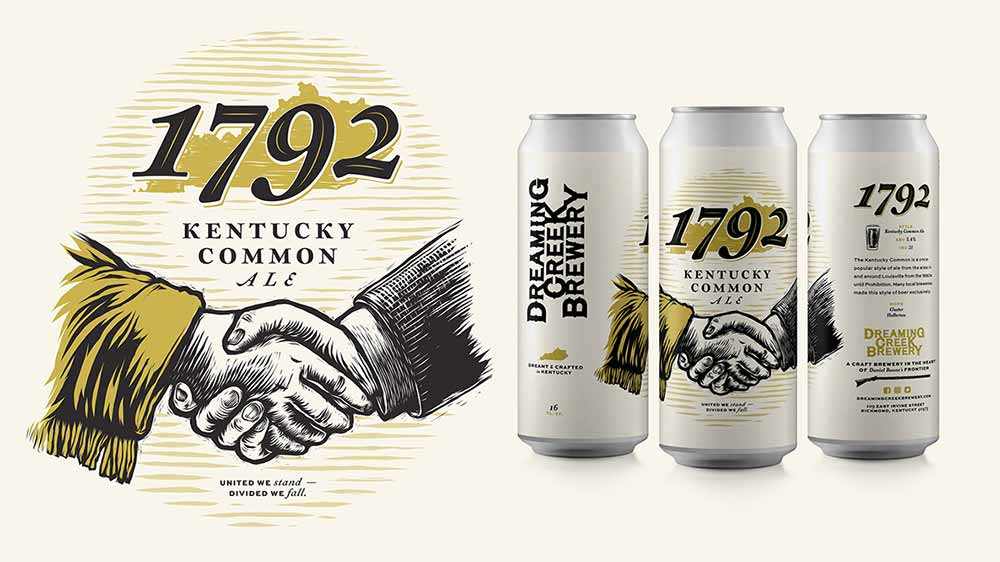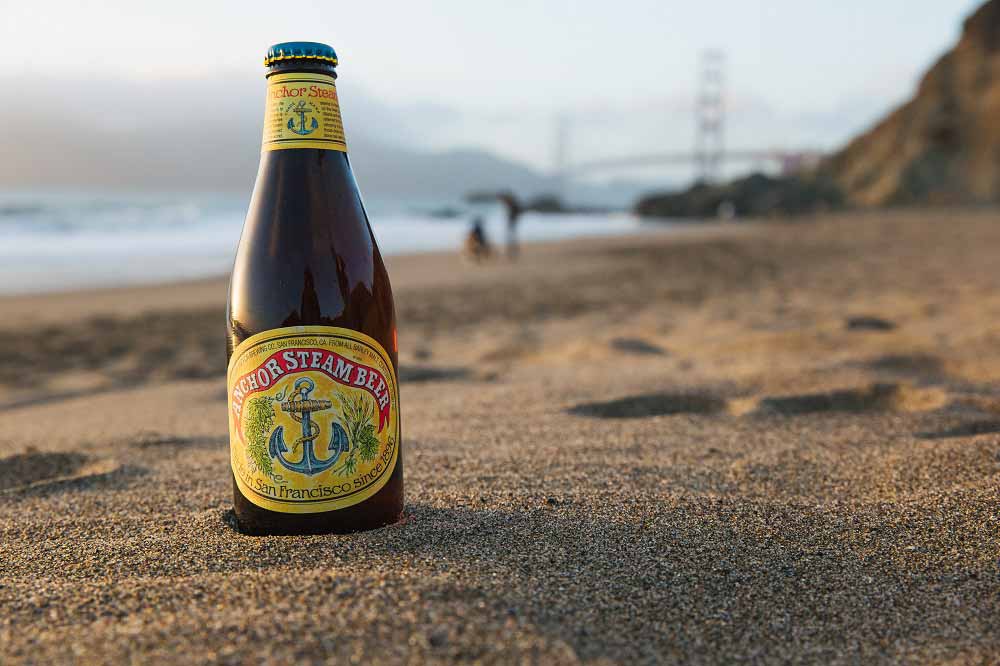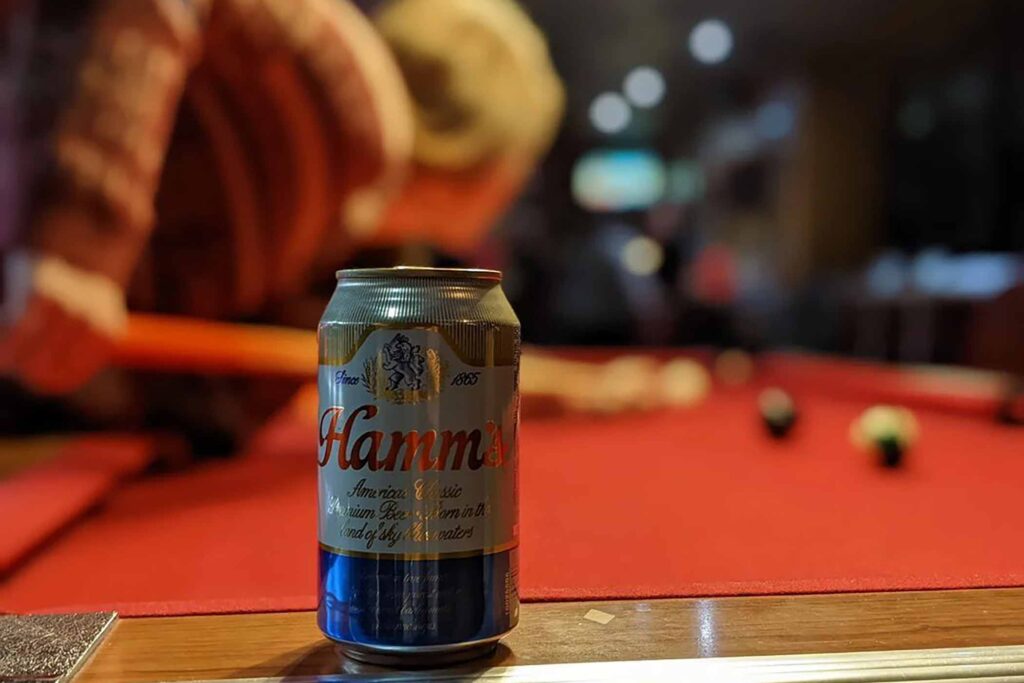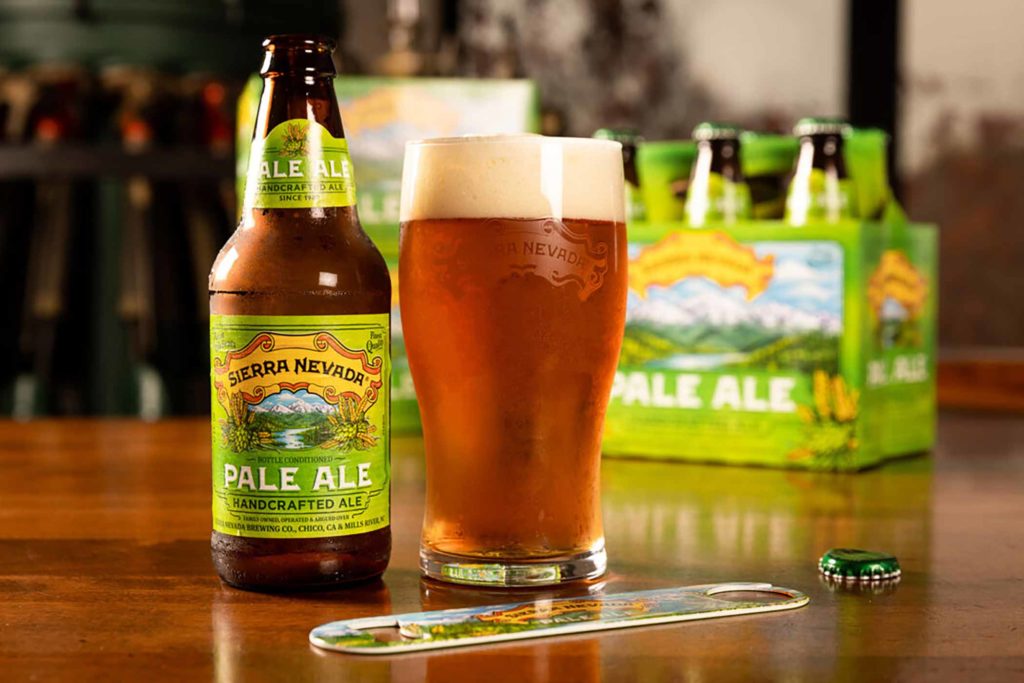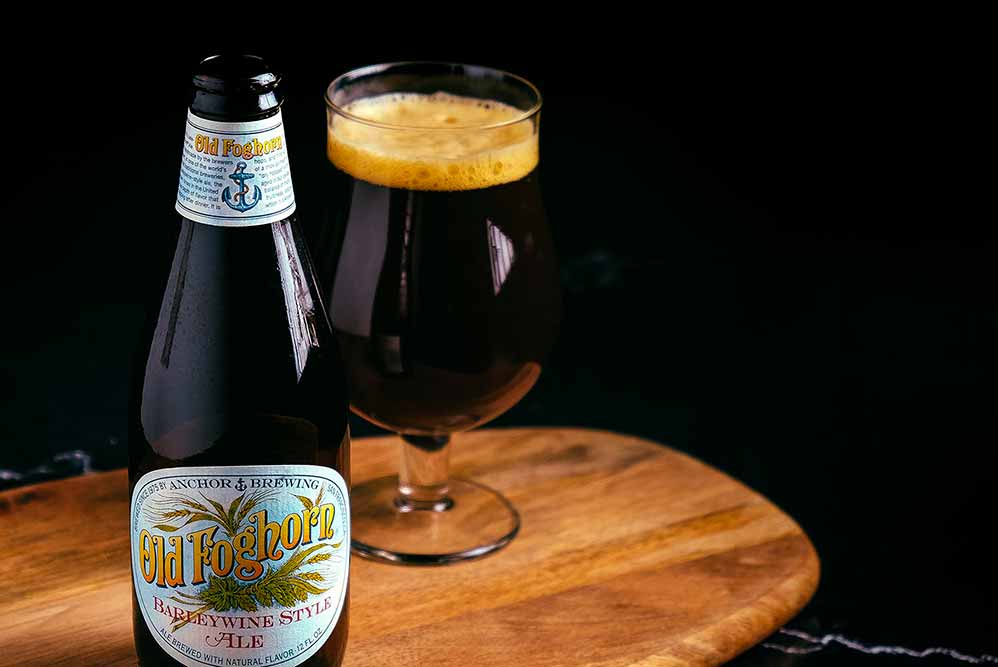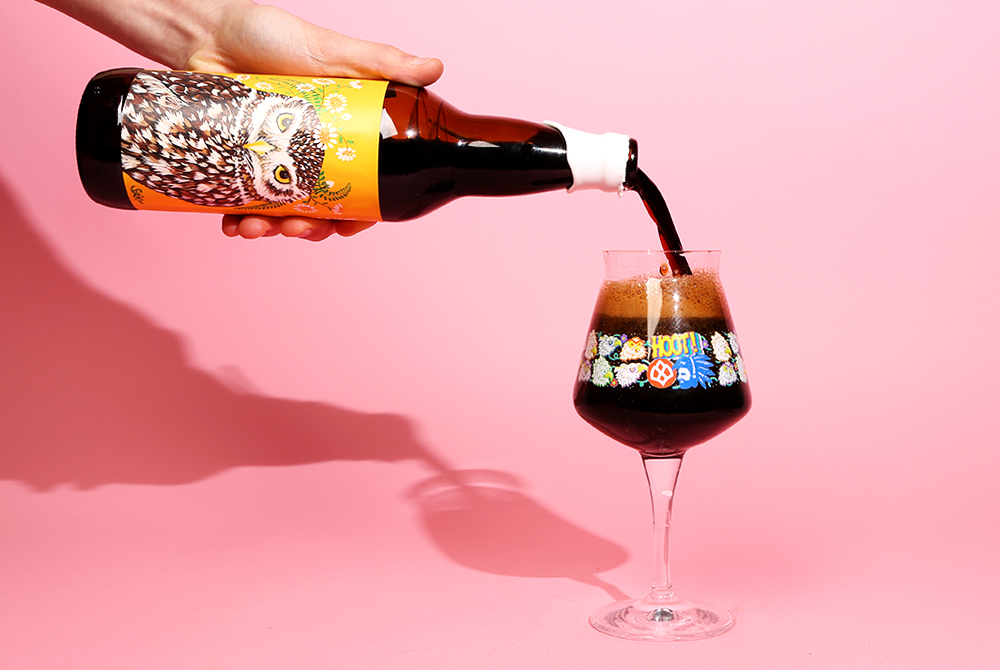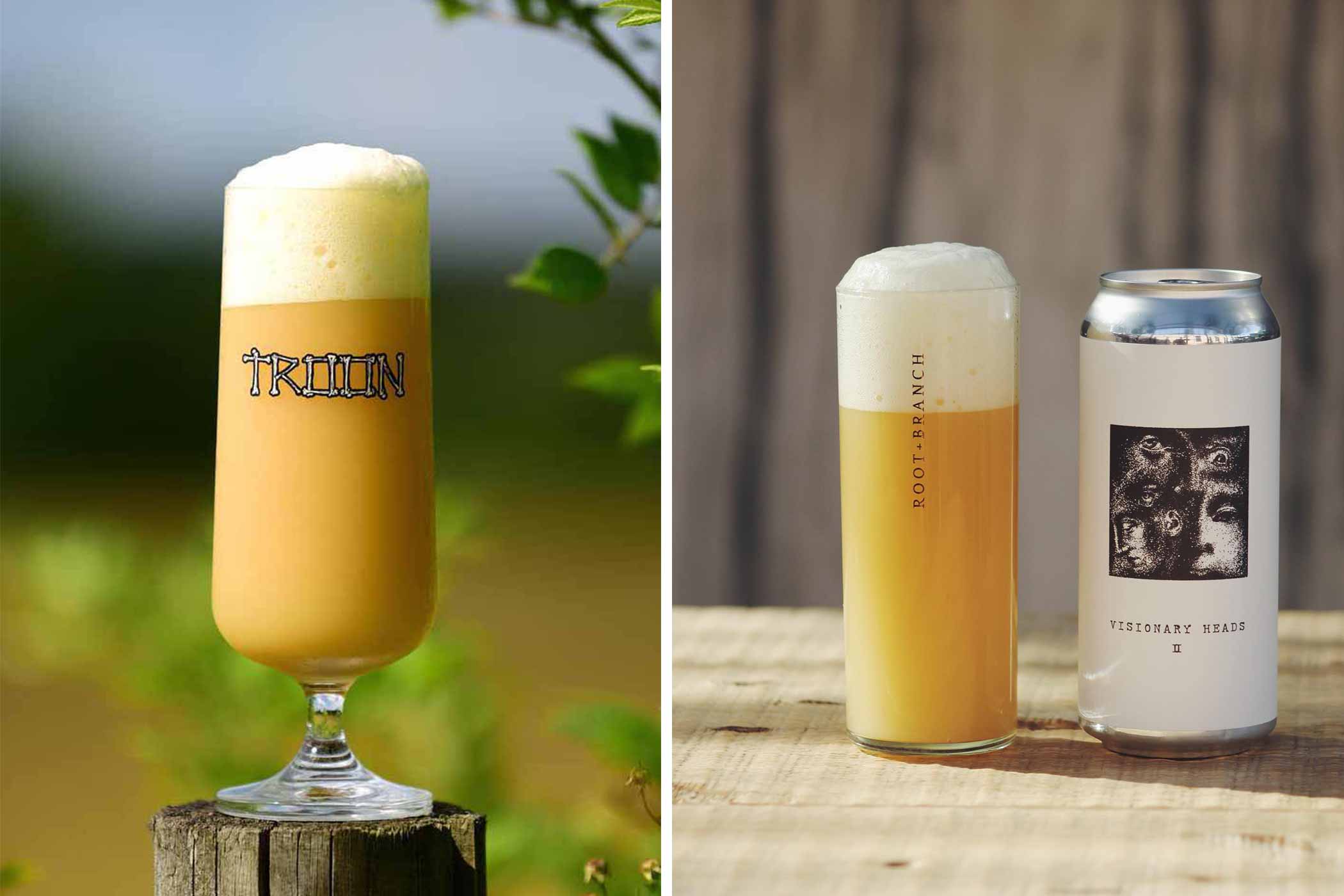Shop
Did You Know These Beer Styles Were Born in America?
California common, Kentucky common, light lager...
More Stories Like This...
Beer’s history dates back centuries, with roots across the globe, from Africa to the Middle East to Europe. Although we love beer here in the U.S. of A., the world’s most extraordinary alcoholic beverage, and its subsequent beer styles, don’t have American ancestry. We drink beer because immigrants brought their brewing processes and techniques with them from overseas—a little bit of their home and culture. So, though Americans treasure beer, they didn’t invent this magical fermented liquid.
In fact, our brewers so readily make alterations to established beer styles only because Americans inherited drinking traditions from other cultures; it’s why we leave esters in our hoppy brews and dump a bag of jellybeans into the kettle. Over the centuries, and powered by an incredible craft beer movement, American brewers have made tweaks and twists, contributing to brewing traditions and even, along the way, inventing some of their own.
So on July 4th, America’s Independence Day, let’s celebrate by taking a look at beer styles created in America.
New England IPA
What Is It? IPA, but murky, foggy, flocculant, opaque
Where Did It Come From?
The backstory on one of the most popular beer styles in American craft brewing over the last decade goes back even further. Saunter down memory lane to 1988, the year American brewing legend Greg Noonan established the Vermont Pub & Brewery in Burlington—the city’s first brewpub in ninety-four years at its opening. Noonan had spent the last few years persuading the state legislature to legalize brewpubs; without his efforts, Vermont, the state with the most breweries per capita, simply wouldn’t be Vermont.
Now let’s leap forward to 1994 when John Kimmich relocated from Pittsburgh to Burlington and entered Noonan’s tutelage. We widely credit Kimmich with brewing the New England IPA, or if you’d rather, “hazy,” Heady Topper, in 2004, a year after opening The Alchemist Pub & Brewery. The sub-style took a while to catch on both in New England and the broader American craft brewing ecosystem; for a time, Heady Topper was the region’s white whale beer, the one you got your mitts on only by tracking or tailgating delivery trucks to Alchemist’s retail accounts.
“People weren’t stopping in to buy a four-pack,” says The Alchemist Co-Founder Jen Kimmich in another piece for Hop Culture, “They were stopping in to buy as many cases as they could fit into the car.”
Now, of course, Heady is readily available everywhere in Vermont, and even outside the state’s limits—but so are legions of beers produced in imitation of its once unique, now ubiquitous juiced-up character. NEIPA has evolved, shifting back and forth from new riffs on the style as trends demand, but no matter where you find one, no matter how brewers tweak it, and no matter what they call it, they all owe a debt to Noonan, Kimmich, and the Green Mountain State.
FIND 11 BEST HAZY’S IN A STORE NEAR YOU
5 UNDER-THE-RADAR HAZY IPA BREWERIES, ACCORDING TO THE EXPERTS
Black IPA
What Is It? IPA, blacker than the blackest black times infinity
Where Did It Come From?
Greg Noonan facilitated the birth of NEIPA, but he didn’t do the labor himself. He did, however, brew the first iteration of the black IPA, an American beer style so associated with doom that acts as the litmus test for whether new styles will stick around or come back from oblivion.
Arguments about the definition of a black IPA miss the forest for the trees; a broad sandbox for brewers to play in, IPA comprises a wide enough swath of variants that a dark take on the niche should be fair game.
Noonan first brewed his black IPA—Blackwatch IPA—in the 1990s, basing the recipe on Scotch ale with a healthy dose of hops in the mix. He shelved the beer for a time until John Kimmich, now under Noonan’s employ at Vermont Pub & Brewery, convinced him to brew it again mid-decade. Kimmich’s innovation included de-husked German malts, absent of roasty bitterness, which kept the beer dark and bready while allowing the hop profile to shine.
Today, it takes a good, discerning palate to find well-made black IPAs that demand a spot in your beer fridge. (Unsurprisingly, El Jefe, Alchemist’s holiday season black IPA, is a prime example.) But black IPA’s reputation as craft brewing’s black sheep, and harbinger of bad luck, is undeserved. It’s as American as any of its hoppy kinfolk—and just as worthy of attention.
ARE BLACK IPAS BACK FROM THE BRINK OF OBLIVION?
Cream Ales
What Is It? A “flavorful American lawnmower beer”
Where Did It Come From?
When life gives you lemons, make lemonade; when it gives you European brewers competing for your patrons’ thirst-quenching business, you make cream ale. In America’s fledgling years, our forefathers contented their taste buds and beat up their livers with English ales, a’la porters, and stouts. As German ex-pats put down roots on American soil between the 1830s and 1840s, tempting pubgoers away from ales with the crispy lagers they brought from home, American brewers made an important realization: “We’re screwed.”
Bored with the same old, Americans turned toward these lagers threatening ale brewers’ livelihoods. Brewers took countermeasures, experimenting with new recipes and figuring out how to mimic lager qualities while brewing on their existing systems. They came up with the cream ale, so called because it doesn’t have cream in it at all. (It’s a gimmick. “Cream” just sounds nice.)
Cream ales bear the same light, crisp body as their lager cousins, with the added benefit of brewing faster. They’re also one of the only proper styles indigenous to the United States— a slight distinction, but not one without merit. After all, there’s nothing more American than being all but wiped out by Prohibition, whose institution left a wedge between the cream ales of ye olden days and the ones you can buy in breweries and beer cellars today.
Perhaps in more recent history, beers like Genesee Cream Ale capture iconic beer-drinking lore. “When Genesee Cream Ale was first released in 1960, it quickly became popular, especially with younger drinkers who were looking for something new and different,” Genesse Brand Director Ingo Grote-Ebbs told Hop Culture. “Cream ales, in general, are so crisp and clean but usually have a little bit of that sweetness that doesn’t feel artificial.”
Modern cream ales aren’t the same as historical ones—but they’re as close as we’ll get.
Kentucky Common
What Is It? Cream ale with a touch of bluegrass and darkness
Where Did It Come From?
Speaking of cream ale: Here’s the Kentucky Common (sometimes known as “Common” or “dark Cream Ale,” a variant of the style that, in case the name isn’t a hint, hails from the whiskey capital of the U.S. of A). Like the cream ale, Kentucky Common is one of the few American beer styles that’s genuinely “from” the U.S. But, like the cream ale, immigrants—German as well as Irish—brought its origins to the Kentucky region in the mid-1800s.
Unlike the cream ale, which leans on a grist comprising six-row and two-row malt, Kentucky Common throws dark as well as caramel malts into the mix—not much of either, but enough that their inclusion is fundamental to the style, according to the Beer Judge Certification Program.
Standard issue cream ales run medium gold, and Kentucky Common hews amber-orange to brown. Compared to the cream ale’s dry, fruitier side, Kentucky Common leans toward a breadier flavor profile.
The two share the same fate, met at Prohibition’s advent. You can still find Kentucky Commons in the market today, but they’re not quite what the style’s inventors knocked out back in the 1840s; the relative scarcity strikes a somewhat ironic chord with a beer called “common.”
California Common (Steam Beer)
What Is It? Hot lager
Where Did It Come From?
We’re starting to see a trend forming here: It’s the 1840s, and people are flocking from all over the place toward a new destination, bringing their brewing traditions with them. In the case of the California common, the “place” equals California. And the “flocking” came thanks to the Gold Rush, that mad dash, where over 300,000 people bore down on the Golden State to strike their fortunes—and, yes, brew some beer.
At the time of this precious metal rumpus, lagers reigned over Eastern brewing culture, so folks from that direction—not to mention Germans hoofing it from Europe—brought their lager yeasts with them. Mining is thirsty work. It’s sore work. There’s no better way to tackle the job’s harsh realities than with a few cold ones. The problem, of course, is that California isn’t the East Coast; the climate ran warmer there than it does today, and nobody had any ice, which made lager brewing a challenge.
How the heck could West Coast brewers ferment a beer at colder, lager temperatures without caves or ice?
They used coolships, broad, open vessels, to finish the beer once it reached peak fermentation, oftentimes placing them on the roofs or top floor to take advantage of the foggy, temperate climate. The adaptation allowed brewers to work with ale temperatures without killing the beer. Although not a refined process, brewing this way did the job. Enter the California common.
California brewers may have been a “little short on ice, but they were long on ingenuity,” Anchor Brewing Historian Dave Burkhart told Hop Culture.
You might know this American beer style by another name, “Steam Beer.” Most famously, Anchor Brewing Company trademarked Anchor Steam® for themselves. Although the appellation sounds like the fluff you’d find on a cheap brewery placemat, it might actually just be a nod to what happened when hot wort in a coolship came in contact with the cold San Francisco night air—steam from the finishing beer.
“If you looked up at a brewery back in those days, including ours, you would say, ‘Wow, that looks like steam coming out of the brewery,’” says Burkhart.
That’s as good a yarn as any.
Today, Anchor Steam Beer is known as one of the most American beer styles, iconic for its color, aroma, and taste. Pouring a beautiful copper, steam beers have a richness on the palate that teeters between bitterness and sweetness courtesy of the fruity esters from the yeast.
“I call it the extraordinary everyday beer,” says Burkhart. “In other words, I never get tired of it; it’s history in a glass, yet it never grows old.
THE INCREDIBLE 150-YEAR-OLD HISTORY OF ANCHOR STEAM BEER®
American Light Lager
What Is It? The king of beers; tastes great, less filling; a perfect shot of refreshment; it’s only worth it if you enjoy it
Where Did It Come From?
The American light lager is one of the most popular American beer styles. Equally as famous for a reputation as weak, tasteless pisswater, anodyne alcohol that qualifies as beer for the plain old fact of its production. these beers—Michelob, Miller Lite, Coors, the works—include hops, grain, water, and yeast; mashed, lautered, boiled, and so on. Crisp and easy-drinking, American light lagers have color in the “golden” range.
But they’re also bland at best. Only a select few of these macro lagers (like Hamm’s) are worth your bother. None of this matters, of course, because Americans buy them up like they’re about to go extinct, so excluding the American light lager from the conversation is impossible—and besides, talented craft brewers make their own variations, which unsurprisingly happen to be good. (Like these top American lagers we’re drinking all summer long.)
These beers, and their mass-marketed cousins, owe their existence to New York’s Rheingold Brewery, from whom Miller purchased the recipe for their diet beer sometime in the 1970s. They changed nothing besides the “diet”; nobody going to sports arenas to root for their team and maybe work up a buzz will care about dieting. So Miller simply sold consumers on the promise that Miller Lite was “less filling,” and welcome a new American beer craze.
American Pale Ale
What Is It? Pale ale, sans that British influence
Where Did It Come From?
English brewing tradition gave us the pale ale. American ingenuity gave us the stateside American pale ale. And with that, the American beer style that would eventually shape the American IPA, which, as we all know, currently enjoys the top spot in beer’s commercial hierarchy.
Around the 1970s and 1980s, with “craft” beer on the rise, brewers looked for a meaningfully different style, but not too different from the lagers Americans favored. Pale ale fit that bill. American beersmiths kicked up the ABV on the English standard and introduced more hops to the formula. If the Brits established pale ales years ago, the American counterpart felt entirely new, which gave the then-fledgling Sierra Nevada Brewing Company a chance to make an impression with their own version.
The second beer Sierra Nevada Co-Founder Ken Grossman brewed at Sierra Nevada, Pale Ale came from Grossman’s many homebrewing iterations, the culmination of countless adjustments to the hops, yeast, and water treatments.
Settling on Cascade, Grossman admits that Pale Ale came out like a then-bracingly bitter beer (38 IBUs) unlike anything anyone had ever tried at the time.
“Our Pale Ale was a shock to most people’s systems,” Grossman told Hop Culture.
As the beer hit the market and Grossman started sampling it at tastings and music festivals, he says, “Ten percent of people loved it, and ninety percent turned their nose up because it was too strong, too bitter, and too aromatic. It took people a while to warm up to hoppy beers.”
Ten to fifteen years, in fact, according to Grossman. But as people’s palates started to shift and, most importantly, Grossman and Sierra Nevada stuck to their principles, the tune people sang began to change.
The impact Sierra Nevada Pale Ale had on American craft brewing, philosophically and commercially, can’t be overstated. Without this particular beer as a gateway toward hop nirvana for brewers and consumers alike, the American craft beer boom either wouldn’t have happened or wouldn’t have turned out the way it has: With brewers heavily favoring hop-forward styles and applications.
Sierra Nevada Pale Ale showed everybody how beer styles known for their malt character first and hop character second could introduce additional hops to the recipe without distracting from the former. Put simply, this beer taught us balance, and that lesson has shaped America’s craft beer culture over the last forty years—and made American Pale Ale integral to its identity.
THE 13 BEST AMERICAN PALE ALES
THE HISTORY OF SIERRA NEVADA PALE ALES
American Barleywine
What Is It? Another bigger, boozier take on an English classic
Where Did It Come From?
Like several beer styles with names appended by “American,” barleywine started in jolly old England, where the cost to brew it meant that only the well-off could afford to drink it. In short, it wasn’t terribly popular across the pond and didn’t come to greater prominence until the mid-1800s through the efforts of Bass, Ratcliff, & Gretton—the precursor to Bass Brewery.
The style came tagged with a steep ABV, typically between 8% ABV and 12% ABV, so despite the work Bass put in adapting barleywine for a broader consumer base, it didn’t catch on the same way as other ales; its biggest boost didn’t come until Anchor Brewing knocked out Old Foghorn in the 1970s, with Sierra Nevada following suit in the 1980s with Bigfoot. What separates English barleywine from American won’t come as a shock: It’s all in the hops.
Classically, English beer favored a light hop touch, giving a subtle hop sensation and letting the grain bill do most of the talking. American brewers have always appreciated a bump in their hop profiles, so when American breweries like Anchor and Sierra Nevada tried their hand at barleywines, they amplified the hops through a dryhop, using American hop varietals—think Cascade, Centennial, or Amarillo.
THE DIFFERENCE BETWEEN AMERICAN & ENGLISH BARLEYWINE
Pastry Beer
What Is It? Dessert in a bottle
Where Did It Come From?
Americans like their dessert at every meal. We’re the country that came up with chocolate-dipped bacon; more than half think putting pineapple on pizza is kosher. (It isn’t. It’s gross.) So it makes sense that American breweries figured out that stuffing a piece of cake into a beer would do well among their clientele, and boy were they right. We love our pastry stouts. We even love our pastry sours.
Who made the first pastry stouts and American beer styles is a mystery. We know that Alex Kidd, blogger, and proprietor of Don’t Drink Beer, coined the phrase as a pejorative. We’re less certain when brewers got it in their heads to make stouts with dessert-inspired flavors: Tiramisu, cannoli, cookies, hot chocolate, candy, and pie. And we’re even less confident about where the pastry stout’s popularity gave way to pastry sour.
What is certain is that a well-done pastry beer, stouts especially, can be a ton of fun to drink—though usually on its own. A standard stout is a meal. A pastry stout is an indulgence, beer to talk about and not beer to talk over. And there’s nothing wrong with that, either! (Unlike pizza topped with pineapple, a crime against one of the world’s most incredible foods.)

